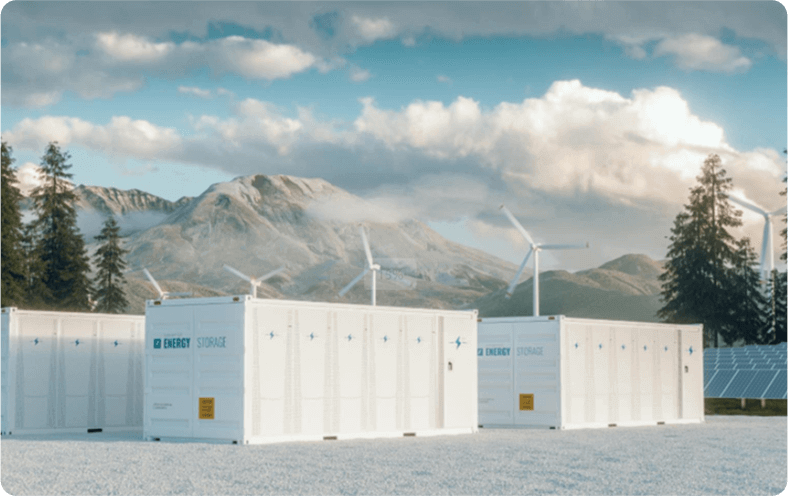Aug. 18, 2025
Do you recall where you were when the Iberian Peninsula went dark? In April of this year, nearly 60 million people across Portugal and Spain found themselves without electricity for roughly ten hours—longer in some regions. Trains ground to a halt, telecommunications systems failed, and emergency services were hampered. Weeks later, another blackout made headlines, this time at the Cannes Film Festival in France. While this latter incident stemmed from more overt human activity, both events—along with rolling blackouts in La Palma—highlight a shared reality: the growing fragility of centralized electricity systems amid complexity, interconnectedness, and in some cases, sabotage.
Iberian blackout 2025: A timeline of trouble
Spain and Portugal grid collapse
April’s Iberian blackout 2025 was a stark reminder of the vulnerability of Europe's interconnected grid. Below is a summarized sequence of events preceding the blackout as reported by the European Network of Transmission System Operators for Electricity (ENTSO-E):
12:32:57–12:33:17 CEST
Three major generation trips occurred in Granada, Badajoz, and Sevilla, totaling around 2200 MW of lost capacity.
These trips caused a voltage spike in Spain, which extended into Portugal.
At the same time, system frequency dropped.
12:33:18–12:33:21 CEST
The voltage in southern Spain and Portugal surged further, triggering additional generation losses.
This led to a cascade effect that deepened the frequency drop across the Iberian Peninsula.
12:33:19 CEST
The power systems of Spain and Portugal began to lose synchronism with the rest of Europe.
12:33:19–12:33:22 CEST
Automatic load shedding and System Defence Plans in Spain and Portugal were activated, as per EU regulations, but failed to prevent the collapse.
12:33:21 CEST
The AC interconnectors between France and Spain were automatically disconnected due to loss of synchronism.
12:33:24 CEST
Full system collapse in Spain and Portugal.
When the power outage struck the Iberian Peninsula, all critical grid parameters plummeted, and HVDC connections to France halted transmission entirely. In a matter of moments, tens of millions were left without electricity. Even islands such as La Palma were impacted, with some enduring outages that lasted for several days.
Cannes Film Festival sabotage
Although regions of France were minorly impacted by the Iberian Peninsula blackout, the country faced its own grid challenges weeks later on May 24 during the famed Cannes Film Festival. As celebrities and media personnel graced the red carpet, approximately 160,000 homes in the Côte d’Azur region lost power, including key facilities supporting the event. While backup generators helped restore basic functionality, the disruption caused significant delays and security concerns at a globally broadcasted occasion. Authorities suspect targeted sabotage against a regional substation and transmission line, prompting an urgent response from both law enforcement and grid operators.
The symbolic impact of the outage – interrupting one of Europe’s most high-profile cultural events – only reinforced the message that no system, no matter how localized or well-funded, is immune to the challenges of an interconnected grid
The systemic fragility behind the flickering lights
What these events demonstrate is that even the most technologically advanced and interconnected electricity networks are not immune to collapse. Governance gaps, limited real-time visibility, increasing demand volatility and the growing complexity of supply from distributed energy resources (DERs) are testing system limits. As ENTSO-E's findings highlight, the path to greater reliability must be systemic and proactive.
Highly interconnected grids, while efficient and capable of sharing resources, also introduce a level of shared risk. A fault in one country can ripple across borders in seconds – as seen in the Spain and Portugal grid collapse. The same interconnectivity that allows Europe to balance supply and demand can also propagate disruptions across thousands of kilometers. Without secure, resilient systems, any break in the chain can quickly escalate into a continental-scale event.
At SolarEast, we believe this level of interdependence makes digital security and local autonomy more critical than ever. That’s why our technology stack is built with robustness and cyber-resilience at its core.
Latest News
Oct. 29, 2025
Read MoreRelated Solutions
Residential Energy Storage System Solutions
+ -SolarEast's residential energy storage system, designed for homes, villas, sunrooms, and communities, stores solar energy to reduce power bills and ensure reliable day-and-night energy use.
Commercial & Industrial Storage System Solutions
+ -SolarEast BESS is a supplier of lithium iron phosphate batteries, microgrid energy, large-scale battery storage, grid-scale energy storage, high-voltage energy storage batteries, and energy storage solutions. SolarEast solar batteries and solutions are recognized and welcomed by customers worldwide. Our targets are focused on the following markets: industrial and commercial energy storage systems, Telecom Energy Storage Systems (TESS), transportation/utility energy storage, and large/medium/small backup power systems.
Utility Scale Energy Storage Solutions
+ -Optimize Energy Efficiency. Cut Costs. Embrace Sustainability. SolarEast Battery Energy Storage Systems provides customized BESS solutions for industrial parks, farm energy storage solutions, and C&I Energy Storage System to reduce peak demand charges, stabilize power supply, and enable smart energy management. Our industrial and commercial energy storage systems cover a full range of products from 30kWh to 5MWh, including small integrated energy storage devices and large customized energy storage solutions, which are widely used in microgrids, off-grid power supply, peak cutting and valley filling, demand side management and backup power.


